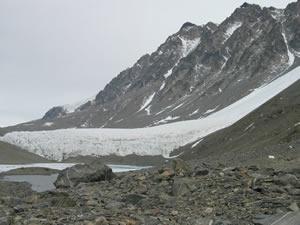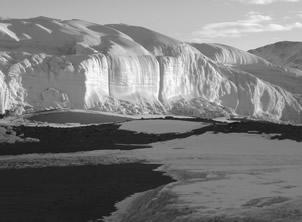

Glaciers cover about one third of the McMurdo Dry Valleys. These large reservoirs of water can be released through melting by relatively minor climatic changes, and they and are fundamental to the hydrology and biology of the valleys because they are the only significant source of water to the valley streams and lakes. Therefore, understanding the controls on the glacial extent and meltwater runoff is fundamental to a process-oriented approach to studying the dry valleys ecosystem. The glacier studies currently in progress in the valleys include mass balance measurements and the biogeochemistry of cryconite holes. Mass balance measurements are based on an ablation stake network ( approximately 260 spread over 6 glaciers), which are measured twice a year, early November and late January, to establish winter and summer mass changes. Information from these measurements is being used to assess whether the glaciers are in balance with the current climate, how ablation is affected by surface slope and aspect, and to provide data for modeling glacial melt. These data also clarify the spatial and temporal changes on the glaciers and with climate data furthers our understanding of how small changes in the climate can have large-scale effects on glacier runoff. Canada Glacier (photo: T Nylen)Repeat photography of the glacier front is continuing to provide a more long-term perspective on glacier expansion or shrinkage. The repeat photography makes use of photos taken during Scott's expeditions to the valley, as well as more current photography in the 1970's to establish the behavior of these glaciers over the past 90 years.
